What Cameras Are Good For Photogarpahy?
All-time camera for photography 2022: top picks for every style and budget
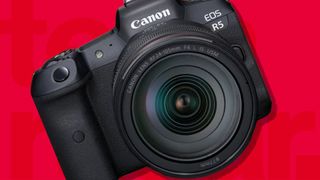
Editor's note: May, 2022
This guide contains all of the best cameras for photography we've tested. Like to specialize in ane particular style?, It'due south also worth checking out our guides to the best landscape photography cameras and the best wildlife photography cameras. Those lists also contain some tailored advice for those sub-genres.
We're also in the process of testing the Canon EOS R7 and EOS R10, which are promising APS-C mid-range and entry-level cameras respectively. They won't challenge the full-frame cameras in this list, but wait out for our full reviews of the EOS R7 and EOS R10 very soon.
Looking for the best camera for photography? You aren't brusque of choices in 2022. It's been a potent twelvemonth then far for Micro Four Thirds and APS-C cameras, which at present offer a fine alternative to the many full-frame options we've seen make it recently. The difficult bit is deciding the best camera for you, merely luckily that'south where we can aid. Based on countless hours of testing out in the field, nosotros've created this ranked list of the finest cameras for photography. (Looking for the best video cameras instead? Check out our separate guide on those).
Nosotros've split this guide into 3 skills levels, so y'all tin can choose the right section for your feel and budget. Want to know our overall best photographic camera for photography right now? That's the Sony A7 IV. It'south a super-powerful all-rounder that feels at dwelling house shooting most types of photography, from portraits to weddings and wildlife. You tin can certainly rely on it for video, too.
The Sony A7 Four is certainly a pricey camera, though, so we've too included lots of options that offer better value for money in these financially trying times. For those on a tighter budget, the Fujifilm X-T4 remains a stiff alternative. Meanwhile, hobbyist and street shooters should check out the Nikon Zfc and Fujifilm X-S10. We're also in the process of testing the Canon EOS R7 and EOS R10, which are both very promising affordable options. If none of those have your fancy, then accept a leaf through our guide to the best inexpensive cameras you can purchase right now.
Our in-depth guide is based on hours of testing with all of the latest digital cameras from the biggest brands in photography, including Sony, Canon, Nikon, Fujifilm, Panasonic, Leica and more than. This ways you can be sure that only the best models are included here. And thanks to our cost comparison tool, you can also exist sure that you're getting the best bargain on the best photographic camera for you.

The best camera for photography in 2022:
The best enthusiast cameras for photography

Following Sony'due south fantastic A7 Iii was never going to exist easy, but the A7 4 is a worthy successor. Equipped with a new 33MP sensor that'southward solid for both stills and video, it's a compelling mirrorless option for hybrid shooters. In our review, we called it a "brilliant blend of photographic power and video versatility"
A price hike does mean it's no longer an entry-level full-frame camera like its forebear, but a Bionz XR processor powers solid operation that broadly justifies the extra expenditure.
The A7 IV too benefits from Sony's grade-leading autofocus skills, plus upgrades like 10-fleck video support and a seemingly endless buffer depth with a CFexpress card. Our tests found this buffer to be more than generous than well-nigh shooters volition need, with paradigm quality leaning more towards resolution than depression-lite performance.
No hybrid camera comes without compromise: there is a heavy crop on 4K footage and information technology isn't the simplest camera for beginners to utilize. The Canon EOS R6 likewise offers faster flare-up speeds for a similar price. But because its powerful versatility and college resolution, the Sony A7 Iv deservedly takes our number one spot.
- Read our in-depth Sony A7 Iv review


It isn't a full-frame camera, but in our review we called the Fujifilm Ten-T4 the best APS-C camera nosotros've e'er tested – and its blend of features, size and value make it a fine choice for hobbyist shooters. The X-T4 builds on the Fujifilm X-T3's impressive foundation by adding in-torso image stabilization (IBIS), faster flare-up shooting and some successful design tweaks. Adding to its all-rounder skills are a bigger battery (which keeps information technology going for 500 shots per charge) and some improved autofocus, which our tests found to exist fast and reliable in most scenarios.
Nosotros remember the X-T4'south 26MP APS-C sensor is course-leading for stills photography, but the Ten-T4 is besides a superb video camera. The in-body epitome stabilization (IBIS) is a big bonus hither, and the X-T4 backs that up with a huge range of tools and a swell shooting experience, including a fully articulating touchscreen. Information technology might toll the same every bit some full-frame cameras, just the X-T4 and its fine range of X-series lenses make a great, smaller alternative for those looking for a mirrorless all-rounder. Despite the looming possibility of a Fujifilm Ten-H2, information technology remains one of the best cameras for photography.
- Read our in-depth Fujifilm Ten-T4 review

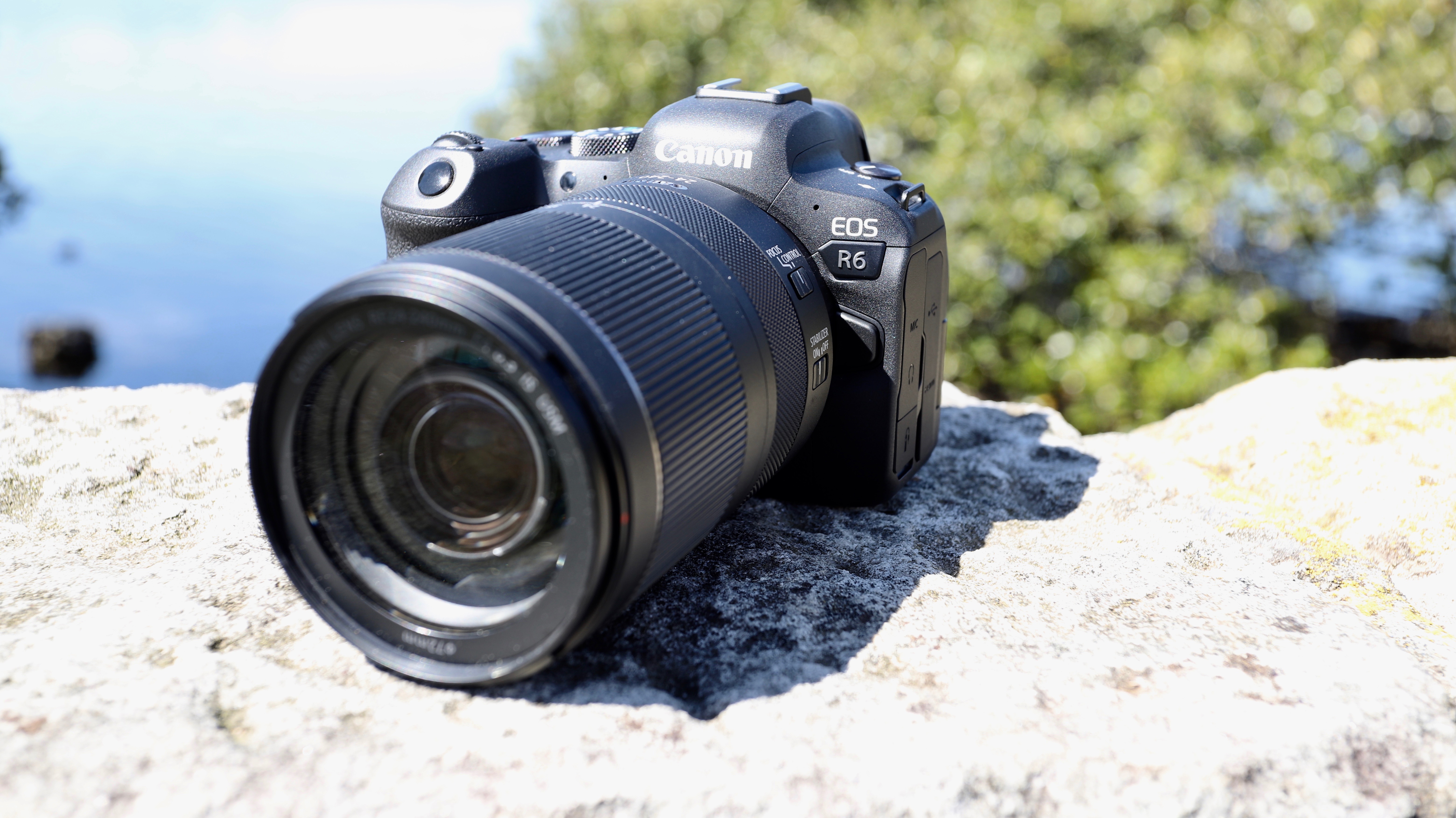
While the Canon EOS R5 is overkill for most people, the EOS R6 is a more affordable full-frame alternative that is simply 1 of the best cameras for photography effectually. If you already own one of Canon'due south early mirrorless full-framers similar the EOS R, or any of its DSLRs, this is a more than worthy upgrade. Based on our review, the EOS R6 brings best-in-form autofocus, a superb in-trunk image stabilization system, and burst shooting powers that mark it out equally a very fine photographic camera for wildlife or sports photography.
Despite its ability to shoot 4K/60p video, the EOS R6 lacks options like the ability to DCI 4K and nosotros institute it to have overheating limitations compared to video-focused rivals similar the Sony A7S III, making information technology improve suited to stills photographers. But for photography, it's an first-class (if pricey) option that delivers hugely impressive autofocus, handling and features that make it one of the best options around for anyone who needs a full-frame photographic camera.
- Read our in-depth: Canon EOS R6 review

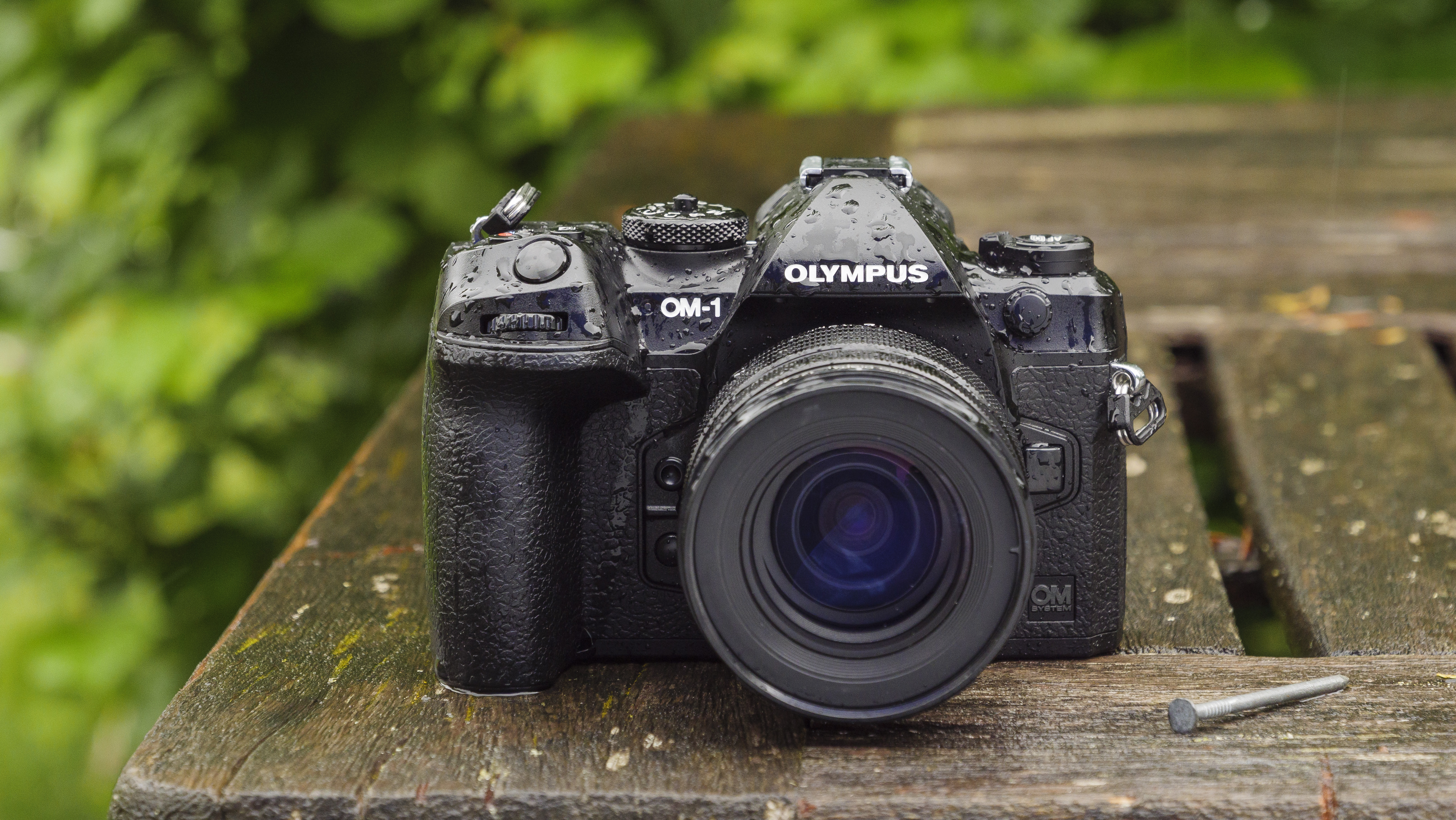
Not anybody demand a full-frame camera – and similar the Fujifilm X-T4 (see no.ii higher up), the OM System OM-i harnesses the benefits of its smaller sensor to create a compelling alternative for those whose priorities are size, versatility and a fun handheld experience. Thank you to its new stacked Micro Four Thirds sensor, which is the showtime of its kind, and a speedy TruePix X processor, the OM-1 performed admirably in most our tests. Quite simply, it's the ane of the most enjoyable cameras you tin can buy.
We plant that the OM-i performed well up to ISO 1600 and had slightly less ambitious noise reduction than its Olympus-fabricated predecessors. Its computational modes are also the all-time yous'll find outside a smartphone, with the likes of HIgh Res Shot, Live ND and in-camera Focus Stacking going some style to compensating for its smaller sensor. On the downside, its autofocus tracking isn't quite up to the level of Catechism or Sony, and the controls can be a petty fiddly. That 20MP resolution as well isn't huge for a camera of this price. But if you can overlook those drawbacks, then the OM-i (and its huge range of Micro Iv Thirds lenses) will brand a fine companion.
- Read our in-depth OM Organisation OM-one review


The Nikon Z6 reigned as the king of this list for a long fourth dimension – and while the Z6 II is only a pocket-sized successor, information technology should definitely be on the shortlist of anyone who'southward looking for a full-frame camera. The Z6 continues to offer groovy value, merely nosotros think the Z6 II is worth the extra price if you tin can afford it - it'southward one of our favourites from our reviewing experience.
Its extra Expeed half dozen processor brings a host of improvements, including new 14fps outburst mode (upwardly from 12fps on the Z6) and some handy autofocus boosts (particularly for animal centre/confront detection). You also become an actress UHS-II card slot, which joins the existing XQD/CFexpress slot, and a firmware update has delivered a new 4K/60p video mode.
Our tests establish in a range of scenarios constitute that the 24MP full-frame BSI CMOS sensor performs well at loftier ISOs. The Z6 II too has class-leading build quality that feels more than substantial in the hand than its rivals.
- Read our in-depth Nikon Z6 2 review


Information technology'southward difficult to remember of another camera that offers the same blend of size, performance, affordability and charm as the Fujifilm X-S10. For both hobbyists and pros looking for a pocket-size mirrorless photographic camera, it's an excellent pick that covers all the bases for both stills and video. As our review discovered, you get a tried-and-tested 26.1MP APS-C sensor (the same as the ane in the Fujifilm X-T4, encounter above) and, impressively for a camera this small, in-body image stabilization (IBIS).
This feature, which helps you preserve prototype quality while shooting handheld, can besides be found in some pocket-size Sony and Olympus cameras, simply none of those offer the X-S10'south fantabulous handling or range of features, based on our testing. It has a handy vari-bending screen, nifty build quality, and shoots impressive 4K video, too. Pair it with a prime number lens and you accept a fine travel or street photographic camera – thank you to 10-S10's large grip, though, it'll also friction match nicely with longer lenses every bit well.
- Read our in-depth Fujifilm X-S10 review


Despite not beingness perfect, the Nikon Z5 is the best entry-level total-frame model yous can buy correct now, making it a neat choice for those looking to upgrade to the larger sensor for the first fourth dimension. With a 24.3MP that reliably produces vibrant, sharp and clean images, a reliable autofocusing arrangement and a comfy and well-built torso, there's a lot we liked virtually the Nikon Z5 during our testing.
Equipping information technology with the same high-resolution viewfinder as its more than advanced Z6/Z7 siblings is a nice touch that adds a touch of premium quality to proceedings. What lets the Z5 down are things that some might not even exist besides bothered about – the 4.5fps maximum frame charge per unit being underwhelming for activity shooters, and the ingather practical to 4K video being frustrating for vloggers. Not bothered past either of those things? It'due south i of the all-time cameras for photography and a fine pick for those who want full-frame on a budget.
- Read our in-depth Nikon Z5 review
Best starter cameras for photography
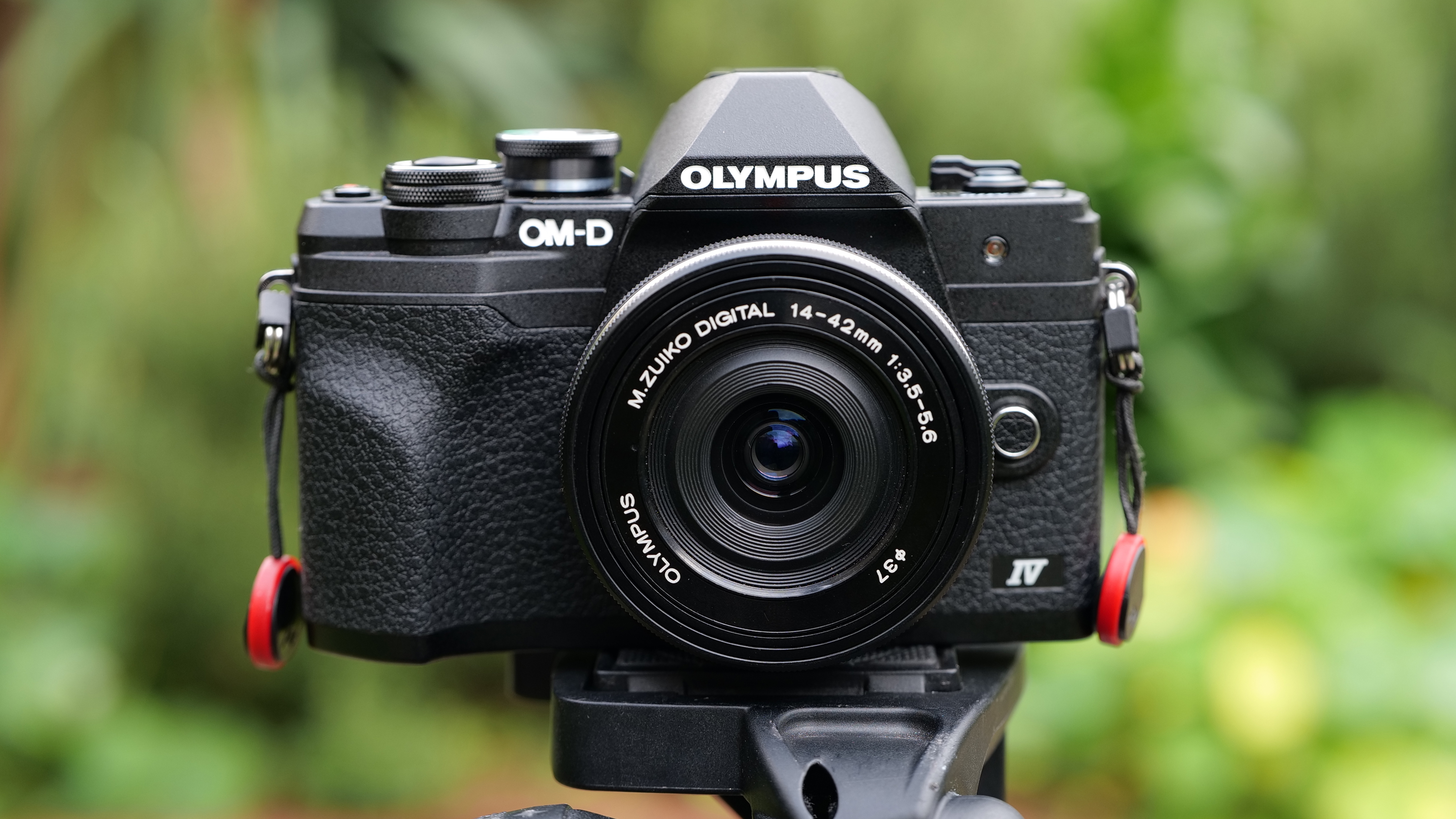
Looking for meaty mirrorless camera to help develop your photographic skills? The OM-D E-M10 Marker IV is ane of the best options around and offers great value because its feature set. A useful flip-down touchscreen and good ergonomics brand it a fine option for beginners who are moving upwardly from a smartphone or meaty photographic camera. And because the Eastward-M10 Mark Iv is a Micro Four Thirds camera, it has ane of the biggest selections of lenses around, which ways it's a model that can actually abound with you.
On the downside, it lacks a microphone or USB-C ports, and the autofocus lags a little behind rivals similar the Sony A6100 (see below). And then while the latter is a better bet for sports or action shooting, we felt like the E-M10 Mark Four is a more than fun camera to employ in our review and is one of the few at this price point to bring in-body prototype stabilization, a very handy bonus for handheld shooting.
- Read our in-depth Olympus OM-D E-M10 Mark 4 review


In our review, we called the Nikon Z fc a "beautiful, casual camera with a capable specification". Under its stunning retro skin, the Nikon Z fc is essentially identical to the Nikon Z50. That's no complaint, given that the Z50 is a mid-range mirrorless marvel. It shares the same 20.9MP APS-C sensor, hybrid autofocus system and performance stats. That ways 11fps burst shooting, detailed stills and solid 4K footage at 30fps. What'southward new is the physical build. An homage to the Nikon FM2, the Nikon Z fc features broadly the same dimensions as its analogue ancestor – and an equally absorbing shell. From the dials to the typography, there are countless throwback cues.
The improvements are more than than skin-deep, though: dissimilar the tilting touchscreen of the Z50, the Nikon Z fc features a vari-bending brandish. That unlocks plenty of flexible framing options, plus it tin can be used with a tripod – or flipped away for the full eighties experience. What'due south lacking is the deep DSLR-like grip of the Z50, so handling fans may still prefer its predecessor. But paired with the new Nikkor Z 28mm f/ii.viii SE prime lens, the Nikon Z fc makes for a compellingly artistic suggestion. Plus information technology'south surprisingly affordable for a camera with defended exposure, ISO and shutter speed dials.
- Read our in-depth Nikon Z fc review


On paper, the Fujifilm X100V shouldn't make sense: a compact camera styled like something from the 1950s, with a fixed 23mm f/2 lens and a premium cost tag. Yet the model's predecessors have become iconic among street photographers – and the X100V follows in their spirit. Understated and timeless, in that location's something very special about that compact retro torso that nosotros loved in our review.
The X100V keeps what works, only tweaking what it needs to: at that place'south now a very handy tilting touchscreen and a weather-resistant body (although you demand to add together a filter to the lens to get full atmospheric condition-sealing). The serial' stock-still aperture lens setup has always been fantastic for street and portrait photography, and the results are only better at present that Fujifilm's added a new 26.1MP APS-C sensor paired with the latest 10-Processor 4. Autofocus is faster, noise control better and prototype quality improved. Certain, it's niche and certainly non cheap, but there's nix else quite like it.
- Read our in-depth Fujifilm X100V review

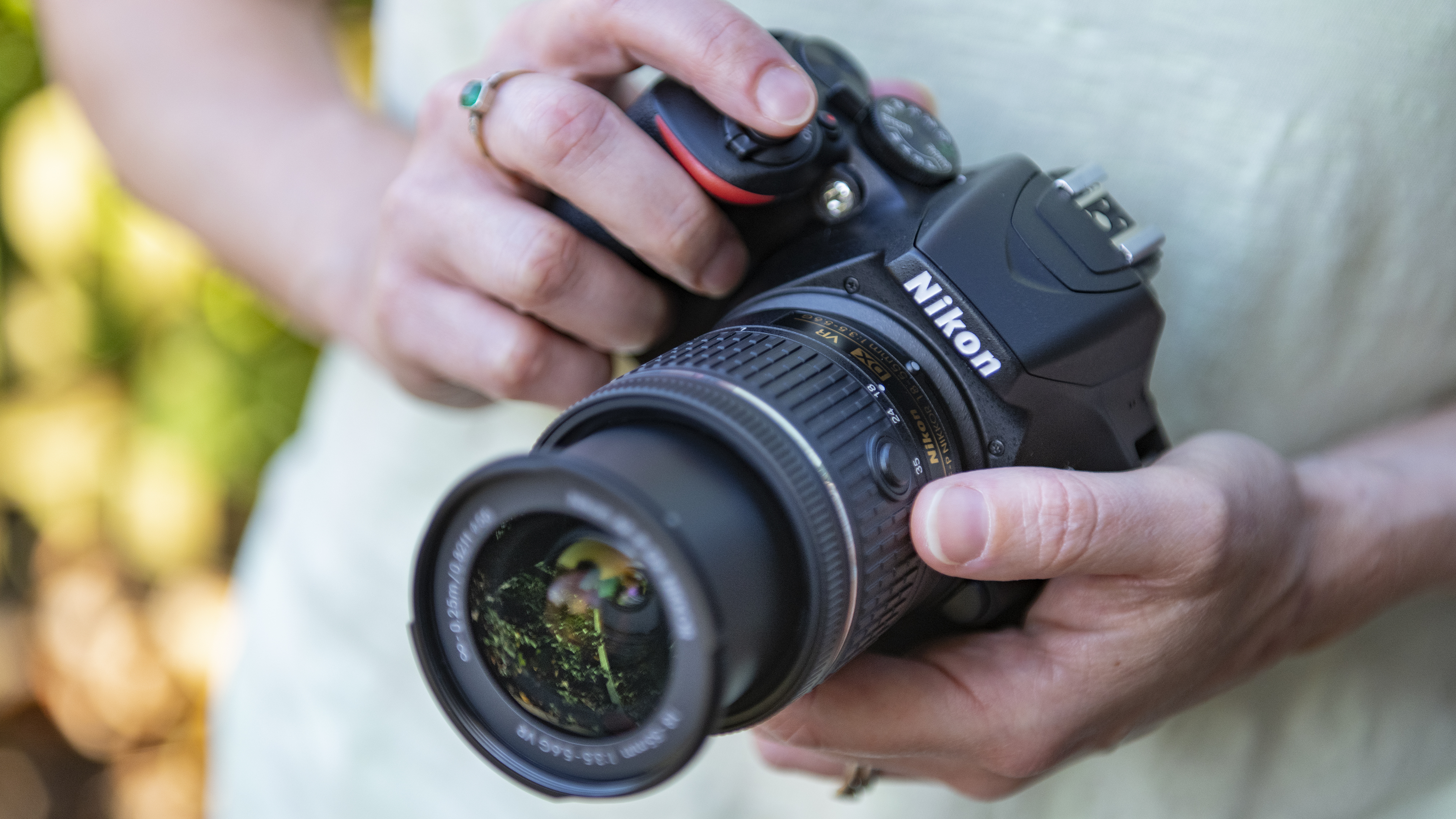
This list is dominated by mirrorless cameras, but if you notwithstanding prefer the benefits of DSLRS – namely, their treatment, superior battery lives and value – and so the Nikon D3500 is the best one around for beginners. Taking the baton from the hugely successful Nikon D3400, it brings a 24MP APS-C sensor and an incredible 1,550-shot battery life that beats the stamina of near mirrorless cameras by about 3 times.
The useful Guide way is there to walk beginners through creating furnishings like a blurred background, while the Nikon DX organisation has a vast array of lenses. If you're starting out, we'd recommend buying the D3500 with the AF-P DX xviii-55mm f/3.5-5.6G VR lens, equally its brings handy vibration reduction for very little extra cost. Those looking for a travel-friendly camera should still consider mirrorless alternatives like the Fujifilm X-T200 and Catechism EOS M50 Mark II, simply otherwise this remains a brilliant way to learn the photographic nuts and first your new hobby.
- Read our in-depth Nikon D3500 review

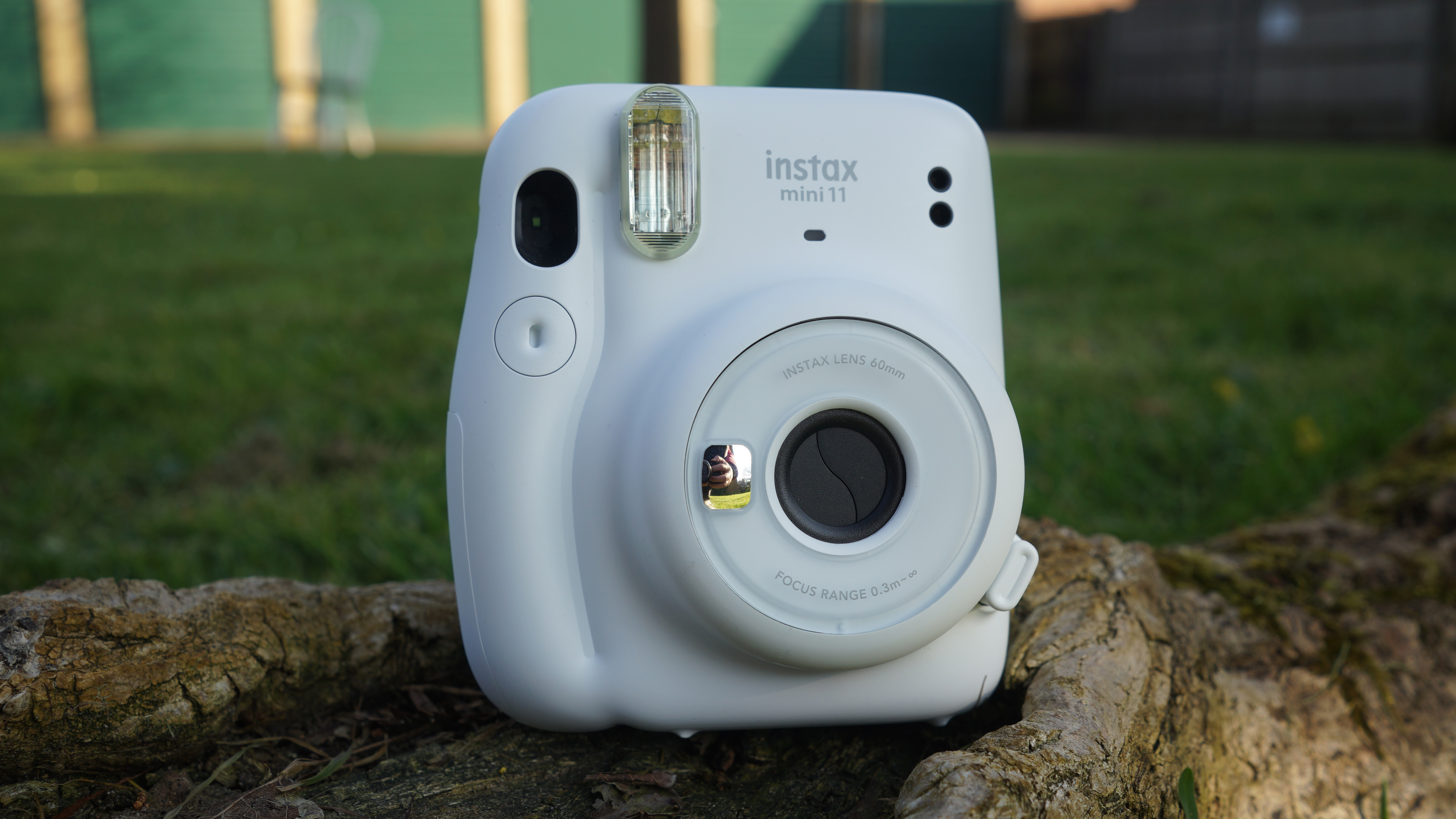
The Instax Mini xi certainly doesn't compete with its more esteemed company here when it comes to pure photo quality. Only is information technology ane of the most affordable, fun means to become into instant photography? Definitely. It doesn't have the more advanced controls or modes of pricier instant cameras, only that's too function of its appeal – thanks to its auto-exposure system, you tin merely point-and-shoot to get lovely, credit bill of fare-sized prints.
Naturally, information technology's a great option for kids and parties, and the relatively affordable film means you won't regret seeing information technology passed effectually amid family and friends. The pop-out lens barrel and little mirror built into the forepart of the camera means it's good for selfie duty, and information technology's bachelor in a range of fun colors, too. If you demand a gift for a photography fan, look no further.
- Read our in-depth Fujifilm Instax Mini 11 review

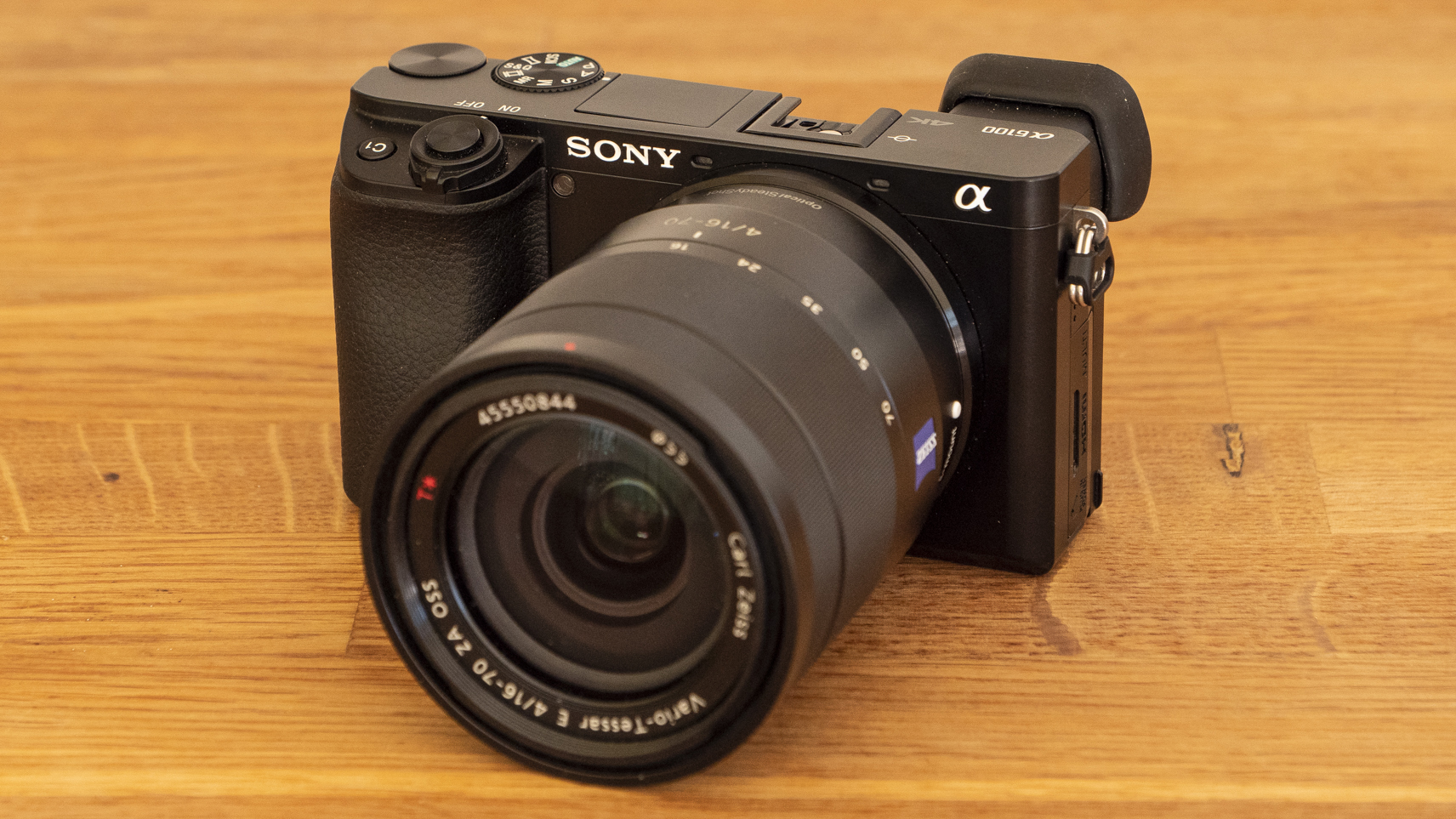
Since its launch 5 years ago, the entry-level Sony A6000 has proven a hugely popular mirrorless camera. Its successor, the A6100, takes its recipe and adds several helpful tweaks. Compact however capable, based on our review the A6100 pairs a beginner-friendly build with a feature set that won't disappoint the more than adventurous. It tin can accept time to understand the camera's potential, only in that location's plenty of information technology: the APS-C sensor is the aforementioned 24.2MP fleck found in Sony's more than premium cameras, while the autofocus arrangement is shared with the flagship Sony A6600.
The consequence is first-class continuous subject-tracking powers and, paired with a good lens, images with plenty of detail and accurate colors. Bombardment life is as well decent and the tilting screen is now touch-sensitive, though its functionality is fairly express. Certain performance and handling quirks are shared with its more expensive siblings – Automobile ISO doesn't conform fast-moving subjects, for example – but these are more forgivable on an entry-level model, especially such a solid all-rounder as the A6100. It deserves to be only as popular equally its predecessor.
- Read our in-depth Sony A6100 review
Best avant-garde cameras for photography
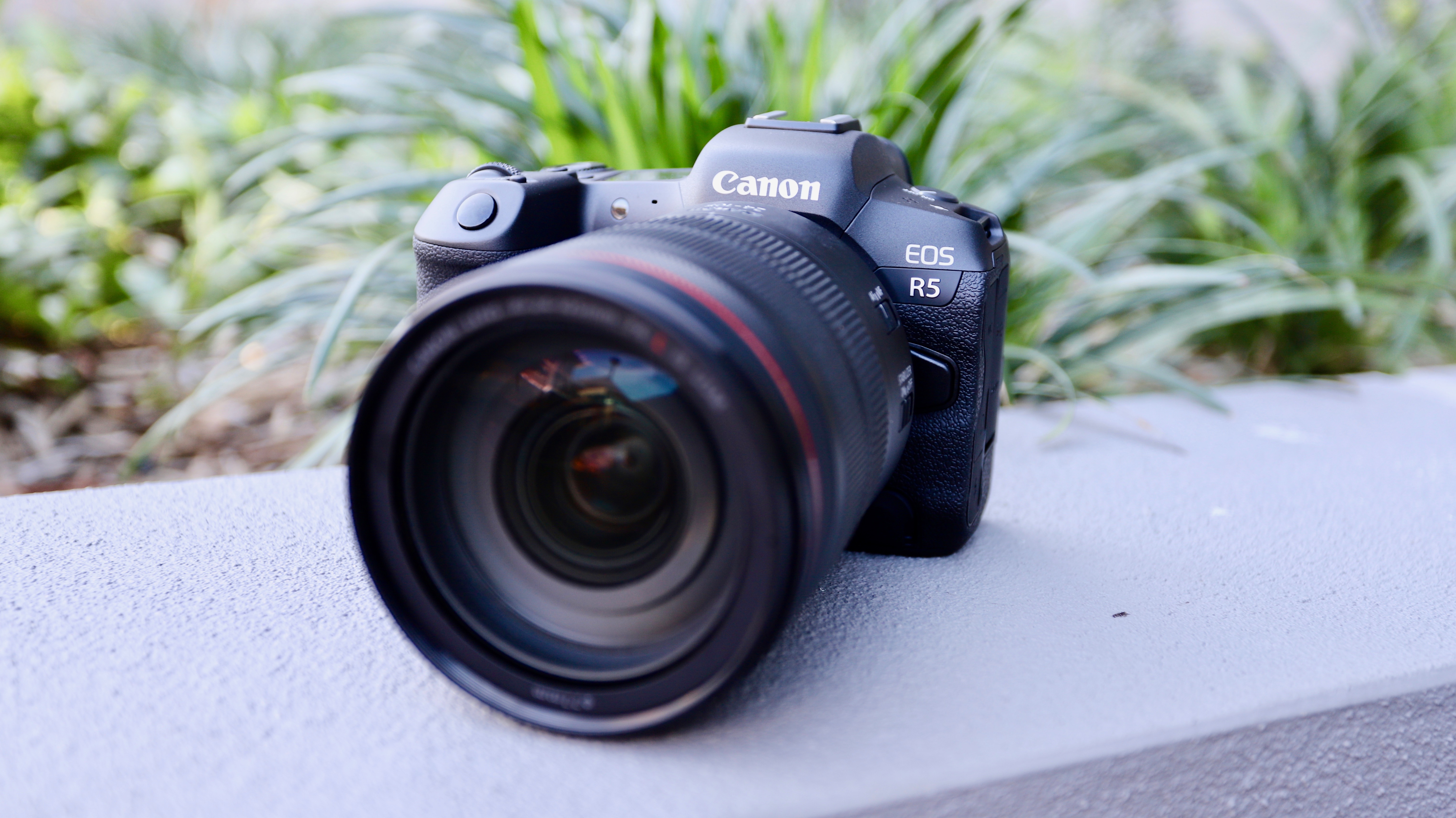
If you see the Canon EOS R5 as a pro stills model with some impressive video features, then information technology'due south one of the best cameras the photography giant has ever made. There's no doubt it has video limitations compared to a rival similar the Sony A7S Iii, especially for shooting longer clips. But after our review, we found information technology great for anyone looking to shoot heed-blowing stills in well-nigh whatever situation, whether that's wildlife or studio work, it's a hugely impressive achievement.
Specially worth of mention is the EOS R5's autofocus, which offers very authentic and reliable field of study-detection and tracking – especially when its comes to people or animals. You also get a superb five.76-million pixel EVF, a torso design that will be comfortably familiar to those coming from DSLRs, and the ability to shoot bursts at 12fps with the mechanical shutter (or 20fps with the electronic equivalent). The video performance, while limited to relatively short bursts, remains superior to the likes of the Nikon Z7 and Sony A9 II, also. With a growing collection of (admitting pricey) RF lenses, the Catechism EOS R5 is the adjacent-gen mirrorless camera that pro photographers have been waiting for.
- Read our in-depth Catechism EOS R5 review


Mural photographers often demand megapixels, dynamic range and weather-proofing – and the Sony A7R Four ticks all of those boxes in style. Its 61MP sensor delivers incredible detail, and you can bump up that resolution with its Pixel Shift mode. Not that it's but comfy shooting spectacular scenery – you too become Sony's excellent Face and Eye AF tracking for human subjects.
A deep grip makes the A7R IV comfortable to utilize during long days out in the field, while the weather condition-sealing is a big step upwardly from the A7R III. You lot also get a bright, precipitous v.76 million-dot electronic viewfinder, although the touchscreen controls are a flake more limited than more than recent Sony cameras like the A7S Three. Still, this doesn't terminate the A7R IV from beingness the nigh desirable in its class, and based on our experience, it even shoots decent video (albeit with some rolling shutter). For scenic trips, it remains one of the all-time cameras for photography.
- Read our in-depth Sony Alpha A7R IV review

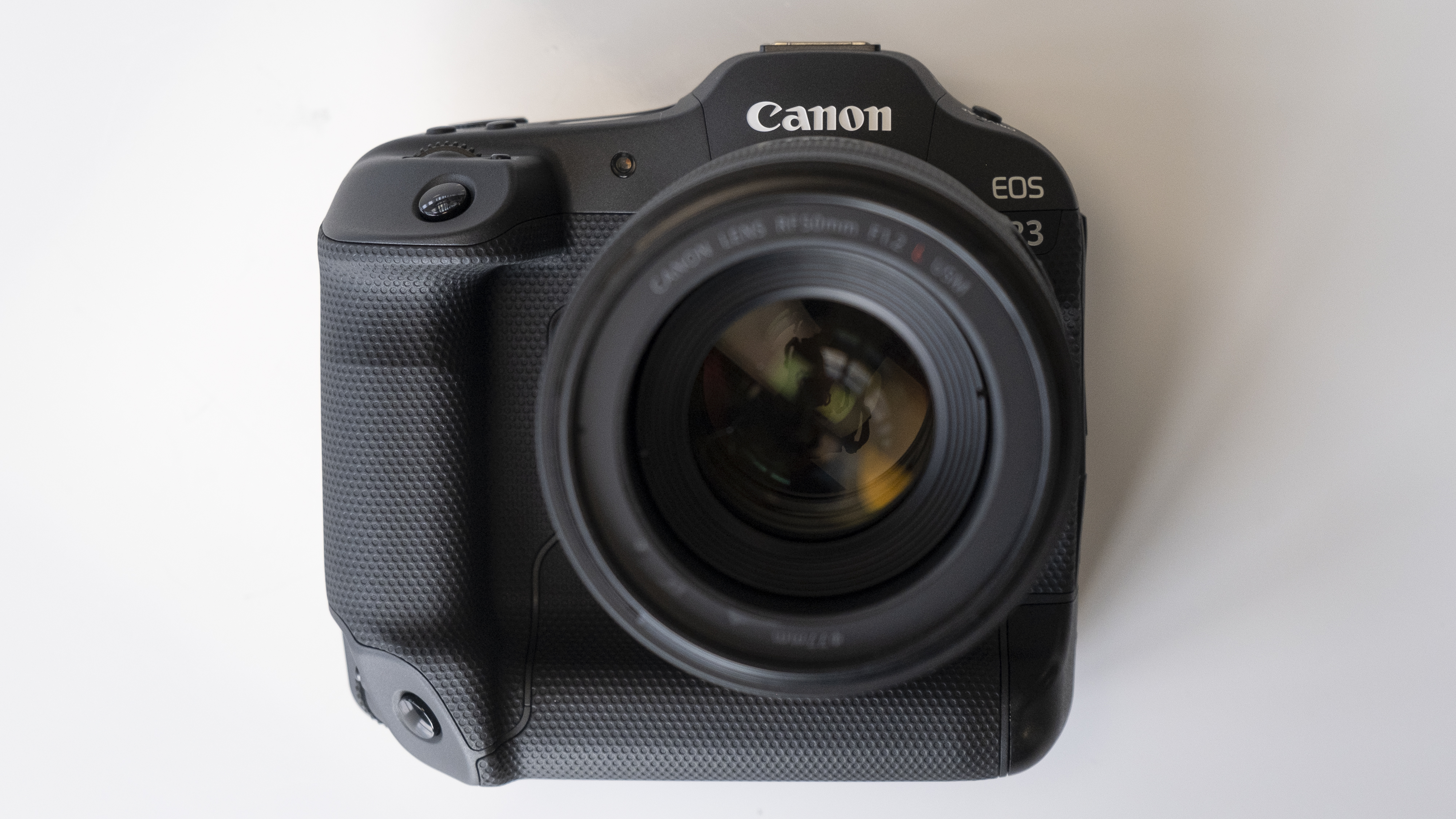
It might look similar a DSLR from a decade ago, but the Canon EOS R3 is the electric current pinnacle of mirrorless operation. Blending the hybrid smarts of the EOS R5 with the mesomorphic course gene of the 1D 10 Mark Three, it also adds a whole host of innovative tech into the mix. Its 24.1MP CMOS sensor might seem low-res for the price, just its stacked design translates into rapid 30fps raw burst shooting. The EOS R3 tin can likewise capture 6K raw video internally at 60p.
Backed upwards past enhanced AF tracking (including Centre Command AF that lets you choose focus points just past looking at them through the viewfinder), the EOS R3 is 1 of the most advanced fast-action mirrorless cameras ever fabricated. Built tough with magnesium alloy, its articulating touchscreen is sharp and useful, while its control layout will exist familiar to pros. Yeah, it'south big, expensive and clearly overkill for amateurs. But for paid photogs who refuse to compromise on quality, speed or functioning in the field, our review process showed u.s.a. that information technology is the new default option and undoubtedly one of the world'south best cameras for photography.
- Read our in-depth Catechism EOS R3 review


Sony'southward undisputed flagship, the A1 is probably the most versatile professional camera ever made - in our review, we chosen it "more than capable of holding its own". Offering a heady combination of high-res stills, 8K video and blistering speed, it's equally capable in the studio as it is on safari, in a stadium or shooting out in the street. With a continuous frame charge per unit of 30fps and sensor resolution of l.1MP, it even outperforms Canon'south photography powerhouse, the EOS R5.
Whisper quiet when shooting, it's capable of capturing incredible detail, aided by extremely rapid and incredibly powerful hybrid autofocus. And while the screen is only average, the 9.44-million dot OLED EVF more than compensates (peculiarly with its 240fps refresh rate). Then what'southward the catch? Price. Starting at $6,500 / £6,500 / AU$10,499 body-merely, the Sony A1 is an extraordinarily expensive camera. If you're looking for a camera to fill just a single niche, in that location are less expensive ways to do it. But if coin is no object and yous want the very best all-rounder on the planet correct now, wait no farther.
- Read our in-depth Sony A1 review

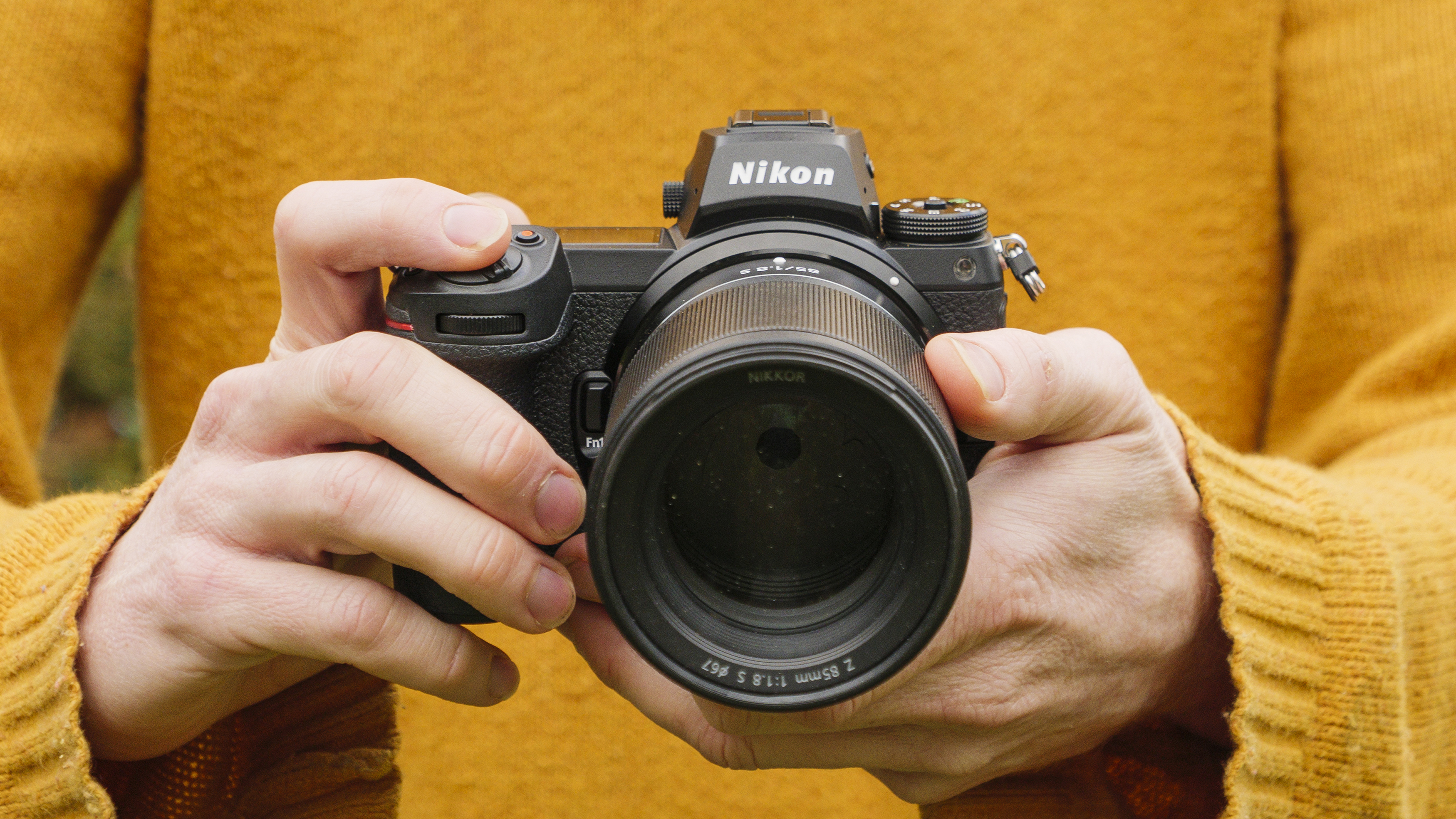
It'southward not a huge spring frontwards from the Nikon Z7, but and so the Z7 2 didn't actually need to be. With a alloy of subtle but important upgrades, including improved autofocus and a deeper buffer, this full-frame mirrorless camera is a very fine selection –particularly if you lot're making the move from an older Nikon DSLR. The Z7 2 combines Nikon'southward signature handling with an excellent 45.7MP full-frame sensor, which is the same every bit the one we loved in its predecessor.
This means y'all get class-leading dynamic range, sharp border-to-edge detail and a handy 19MP APS-C crop fashion, for sports or wildlife shooting. Some rivals may offer more than in the mode of video features and autofocus performance (for action shots in detail), but the Nikon Z7 II brings internal 4K/60p video and remains one of the best full-frame cameras y'all tin can buy today. With the Z system's lens collection too slowly growing this year, now is the time to make the switch from your DSLR.
- Read our in-depth Nikon Z7 2 review

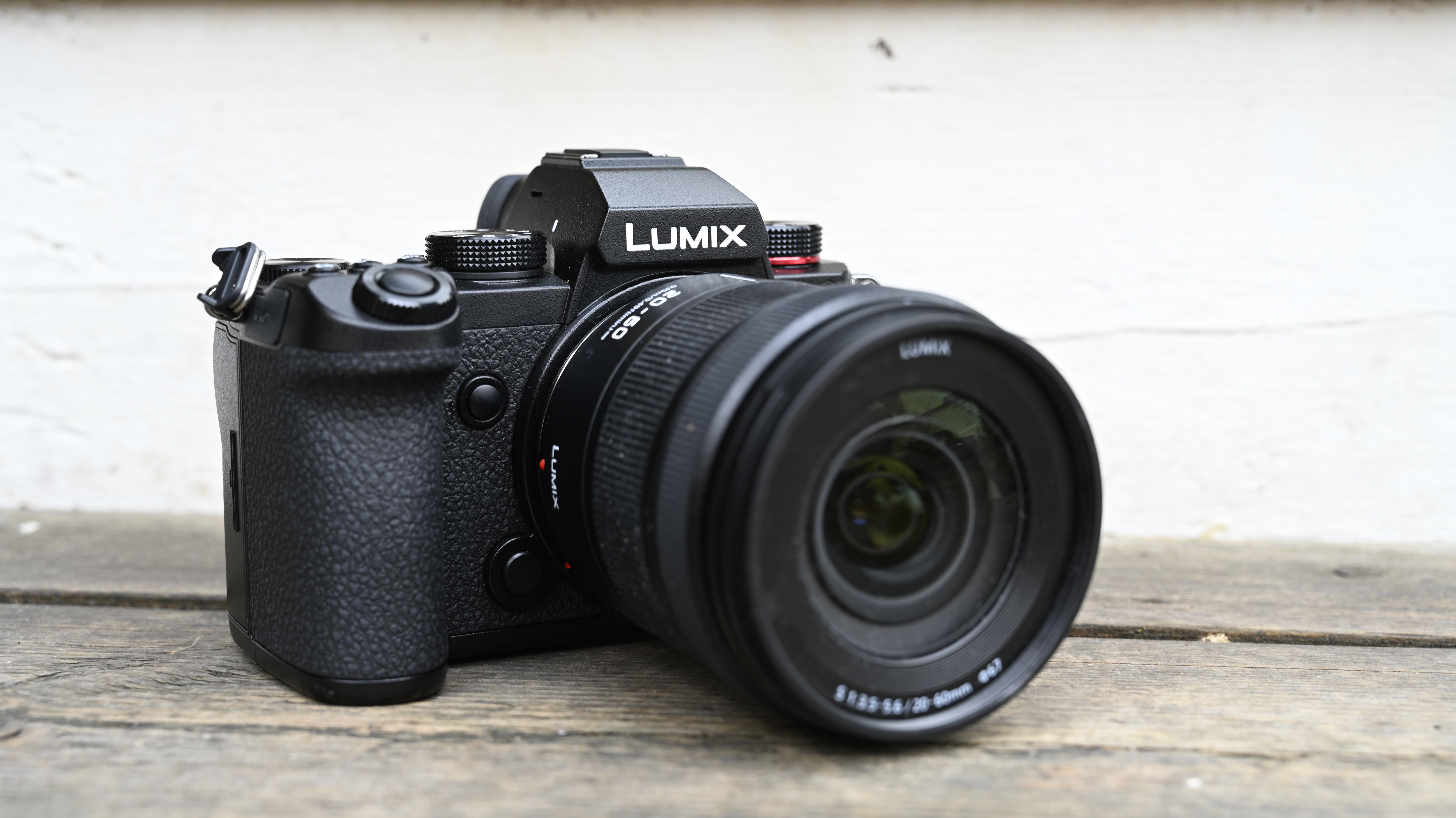
Looking for a pocket-sized full-frame camera that can help you shoot an even mix of high-quality video and yet photos? The Panasonic Lumix S5 is 1 of the best options effectually, based on our experience in testing. Smaller than the Panasonic Lumix GH5, which has a much smaller Four Thirds sensor, the S5 is specially talented when it comes to shooting video, offering an uncropped 4K/30p mode and other high-end specs that include V-log recording and Dual Native ISO.
With a pretty modest burst shooting rate of 7fps, it's non the best option for sports or action photography, but its 6K photo way (which lets you extract 18MP stills from video) compensates to an extent, and it otherwise offers impressive image quality and a much-improved autofocus performance. This feels like the camera Panasonic should accept launched its S series with, and in that location are very few rivals at this price indicate that offer its alloy of size, operation and video features.
- Read our in-depth Panasonic Lumix S5 review

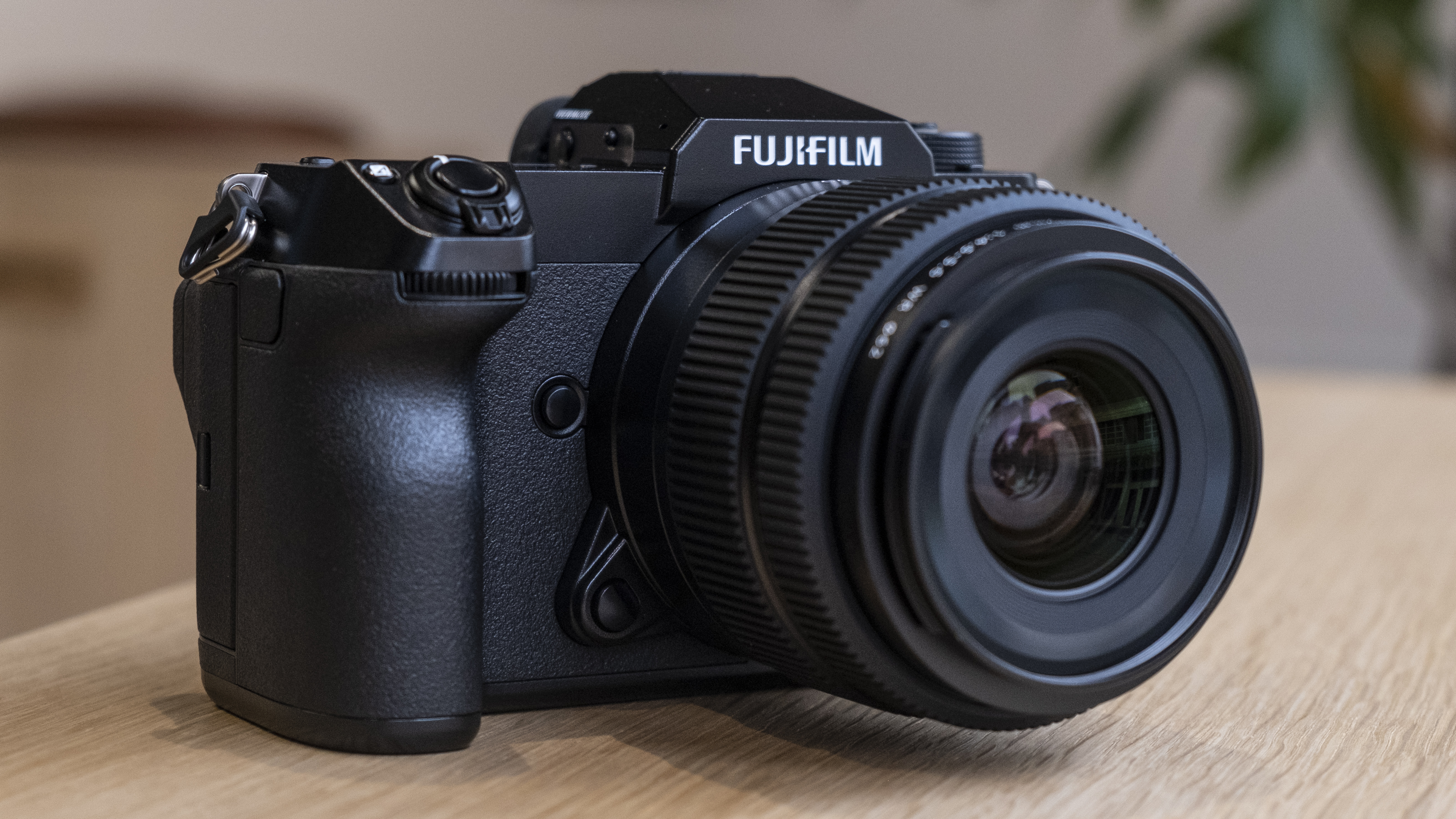
If you want to become a stride beyond full-frame, at to the lowest degree in sensor size terms, and so the medium format Fujifilm GFX50S 2 could well be the camera for yous. We found that its huge sensor, which is effectually 1.7x larger than full-frame, produces impressive detail, dynamic range and low-light performance, which makes it ideal for anyone who specializes in shooting landscapes, architecture and even portraits.
Naturally, there are drawbacks, and the GFX50S 2 certainly isn't an all-rounder – the burst shooting speeds summit out at 3fps and at that place'southward no 4K video, so it'due south very much a camera for photography. But these limitations have enabled Fujifilm to keep the toll down to a level that was unheard of for medium format cameras only a few years ago. Pair it with Fujifilm's first-class (if expensive) GF lenses, and yous have a camera that'due south surprisingly at home with handheld shooting – and certainly one of the best around for outright image quality.
- Read our in-depth Fujifilm GFX50S 2 review

How to choose the all-time camera for photography
The primary thing to wait at when buying a digital camera is sensor size. Larger isn't ever better, but it is a good guide to what kind of photographic camera it is, how expensive the lenses will be, and who it's aimed at. In general, Micro Iv Thirds and APS-C cameras are for both hobbyists and pros, while full-frame models tend to exist strictly for advanced photographers with bigger budgets. Compact cameras with 1-inch sensors are for travel zooms and everyday photography.
Other features to look out for are viewfinders (electronic or optical), which are considered essential past most photographers, and handling. If you're likely to desire to use longer lenses, then a good grip is essential. You should also consider which lenses yous're likely to need for your favorite types of photography – for example, bright prime number lenses are better for portraits and street shooting, while wide-angle zooms are more useful for landscapes. Deciding which camera system, including lenses, is the best for y'all is often meliorate than choosing a camera in isolation.
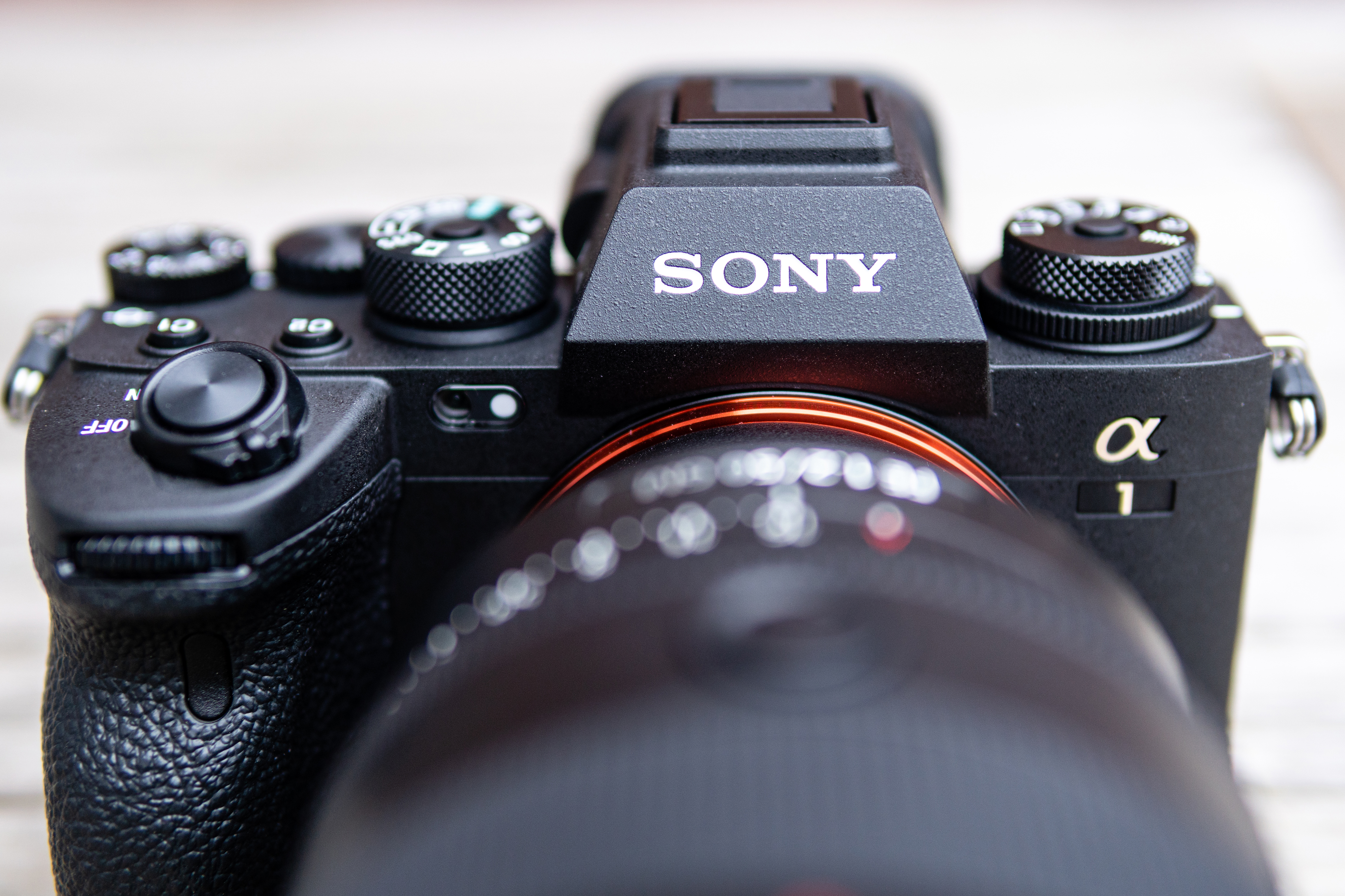
Are DSLRs best for photography?
DSLRs have long been a catchword for 'serious' photography, but they're no longer at the top the photographic camera tech tree. Mirrorless cameras, which replace the DSLR's optical viewfinder with a wholly electronic EVF, are now the beneficiaries of the photographic camera giants' latest lenses and autofocus systems. Neither Canon nor Nikon has released a new DSLR in years. That's why our listing above is dominated by mirrorless cameras, rather than DSLRs.
That doesn't necessarily mean yous shouldn't consider buying a DSLR for photography. Their main benefit now is value for coin – their lack of an electronic viewfinder means they're usually cheaper than mirrorless equivalents, and their maturity ways they take a wide range of affordable lenses. Archetype DSLRs like the Catechism EOS 6D are also excellent 2nd-hand buys. Just the smarter long-term investments are at present mirrorless cameras.

How we examination cameras
Ownership a camera these days is a big investment, and so every camera in this guide has been tested extensively by us. These days, real-world tests are the about revealing manner to empathise a camera's performance and character, so nosotros focus heavily on those, along with standardized tests for factors like ISO performance.
To start with, we look at the photographic camera'south design, handling and controls to get a sense of what kind of photographer it's aimed at and who would about enjoy shooting with it. When we take it out on a shoot, we'll use it both handheld and on a tripod to get a sense of where its strengths lie, and test its startup speed.
When it comes to performance, nosotros use a formatted UHS-i bill of fare and shoot in both raw and JPEG (if available). For outburst shooting tests, nosotros punch in our regular test settings (ane/250 sec, ISO 200, continuous AF) and shoot a series of frames in front of a stopwatch to come across if it lives upwards to its claimed speeds. Nosotros'll likewise expect at how apace the buffers clears and repeat the test for both raw and JPEG files.
In diverse lighting conditions, we too exam the camera'south different autofocus modes (including Confront and Eye AF) in unmarried point, area and continuous modes. Nosotros likewise shoot a range of photos of different styles (portrait, landscape, low lite, macro/close-up) in raw and JPEG to get a sense of metering and its sensor's power to handle dissonance and resolve fine detail.
If the camera's raw files are supported by Adobe Camera Raw, nosotros'll also process some test images to come across how nosotros can button areas similar shadow recovery. And we'll also test its ISO functioning across the whole range to get a sense of the levels nosotros'd be happy to push the camera to.
Battery life is tested in a existent-world mode, as we use the camera over the class of the day with the screen set to the default settings. One time the battery has reached null, we'll and then count the number of shots to see how it compares to the camera's CIPA rating. Finally, we examination the camera'due south video skills by shooting some exam footage at different frame-rates and resolutions, forth with its companion app.
We then take everything we've learned about the camera and factor in its cost to go a sense of the value-for-money information technology offers, before reaching our final verdict.

- Best photographic camera for beginners
- Best beginner DSLR photographic camera
- Best cameras for kids
- Best DSLR
- Best mirrorless camera
- Best 4K camera
- Best full-frame photographic camera
- Best compact photographic camera
- What photographic camera should I buy?
- Mirrorless vs DSLR: ten key differences
- Photographic camera rumors
- Best digital photograph frame
- Sony Alpha 1: everything you need to know
- Plow your snaps into a beautiful photo volume - we've picked out the all-time
Source: https://www.techradar.com/news/best-camera
Posted by: dominguezwhiliver.blogspot.com

0 Response to "What Cameras Are Good For Photogarpahy?"
Post a Comment